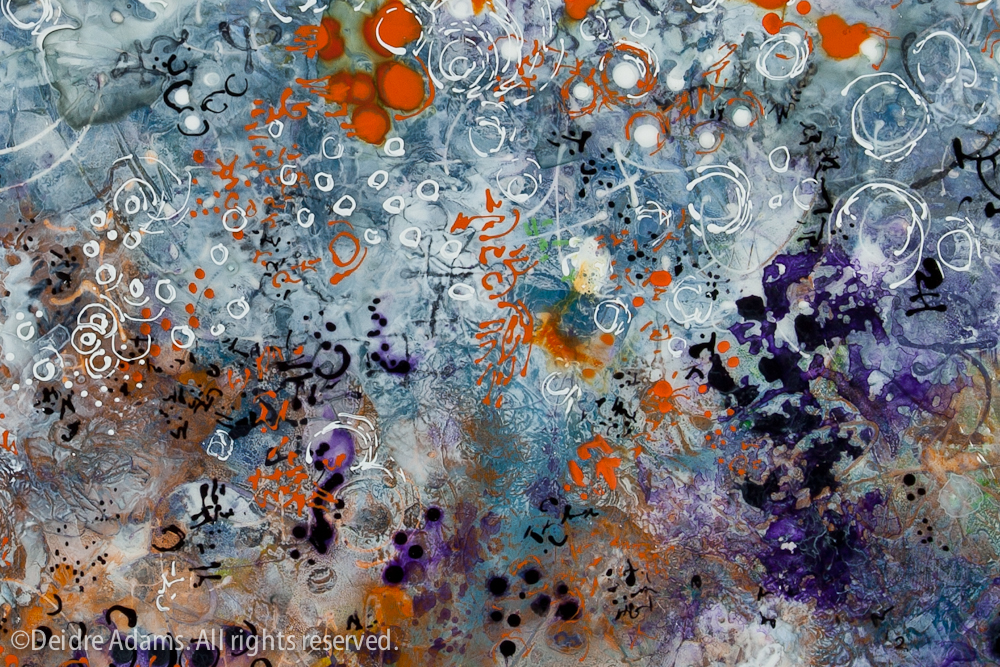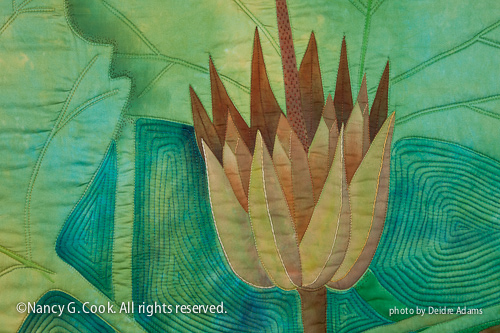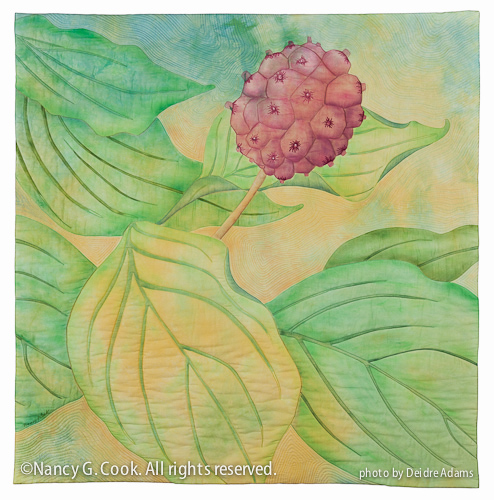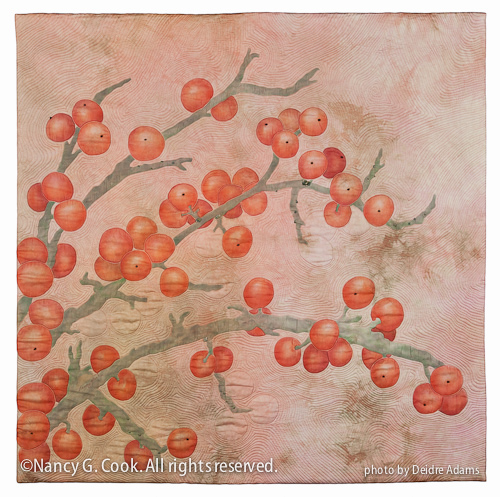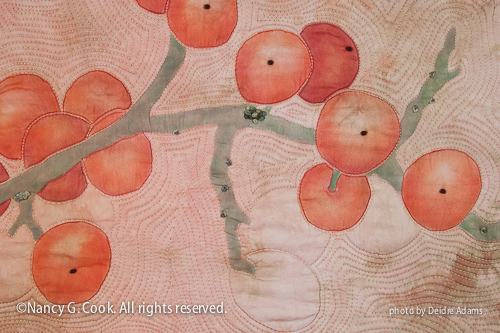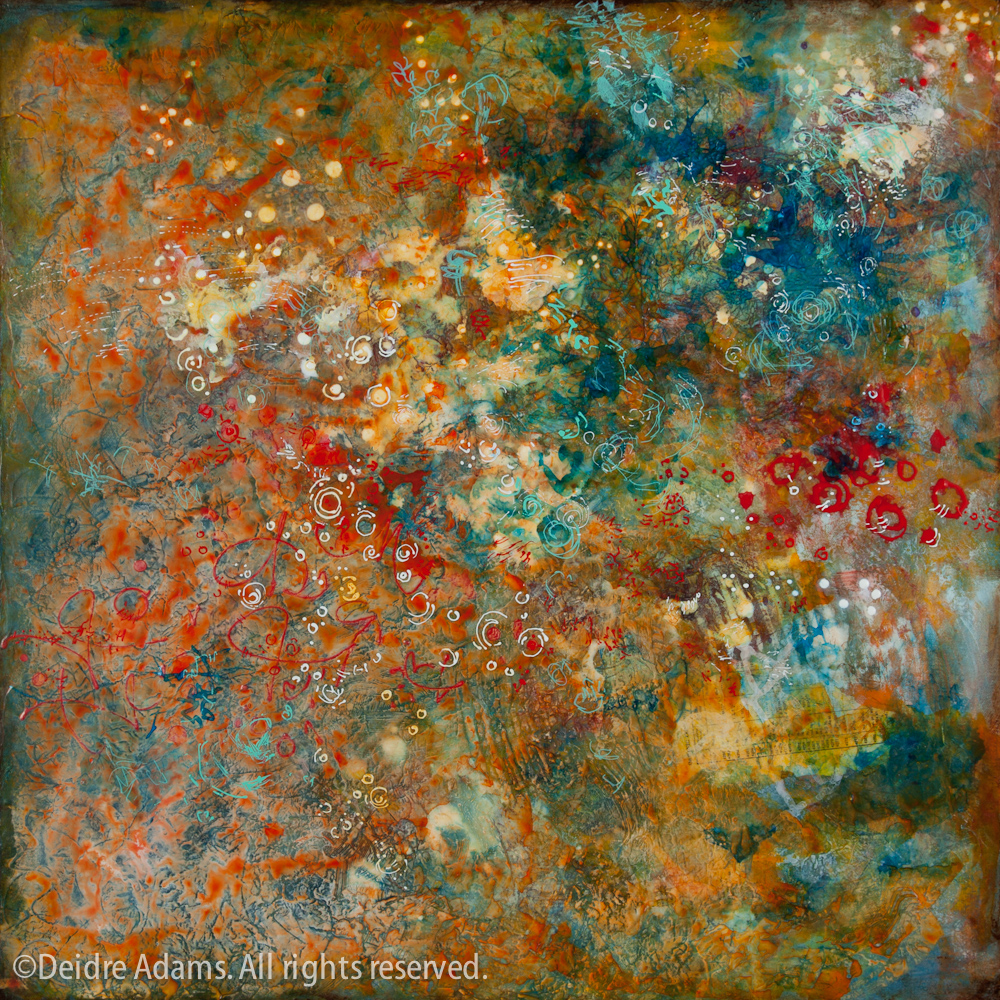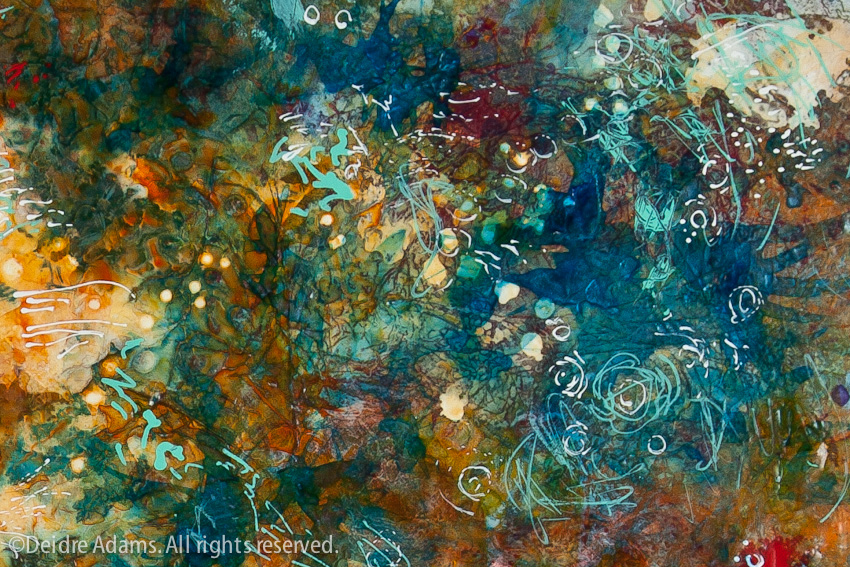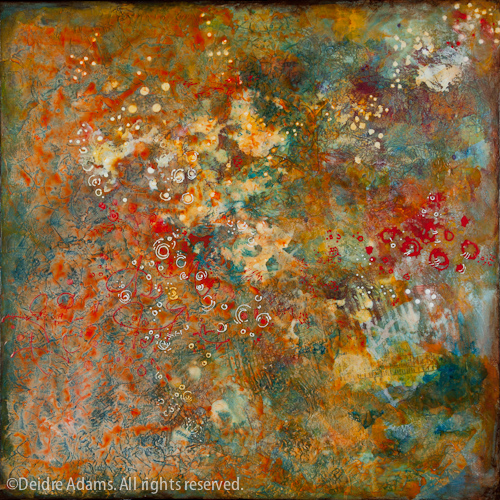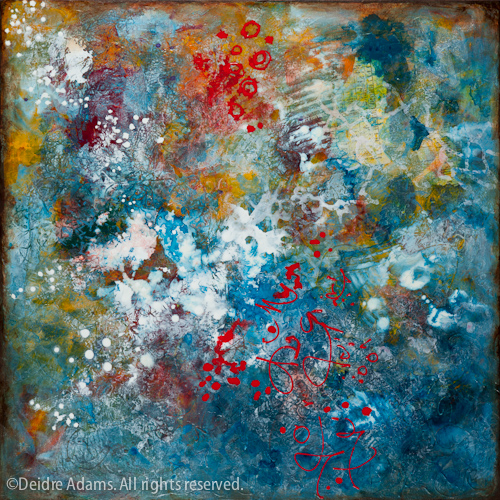So-Called Vital Activity

So-Called Vital Activity, 24 x 24 inches, acrylic and mixed media on panel, ©2011 Deidre Adams
One of the dilemmas faced by artists is the multitude of available ways in which we might wish to express ourselves. Am I a fiber/textile artist? Am I a painter? Photographer? Printmaker? It’s so vexing to have to choose. But it’s so wonderful to have choices. Right now I have three textile pieces pinned up on my wall that I’ve been working on in rotation for many months. One of them is a very large piece that I entered into Quilt National. I was, frankly, relieved when it wasn’t selected for the show, because I have had that experience – enter multiple pieces, and the jurors will pass over your fabulous masterpiece and select the one you thought was the weakest and just included so you could have a body of work to submit. Since the work in question was rejected, I’ve changed it substantially several times. But it’s just not working for me, and I haven’t figured out what to do yet.
So in the meantime, I’m having a blast just painting. There is a lot of new work to show, and I’ll be posting new paintings on a regular basis for a while. Does this mean I’m not going to do textiles any more? In the short term, quite possibly. But since I seem to crave variety, I’m sure I’ll go back to it when my current love affair for squishy, swirly, drippy paint on a smooth, resistant surface subsides.
